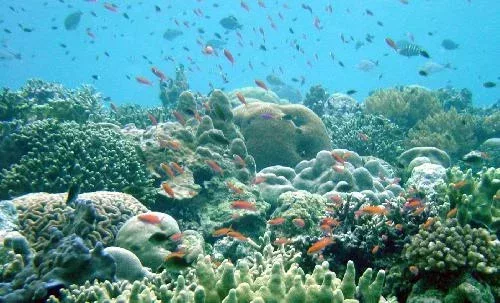The Secretariat of the UN Convention on Biological Diversity (CBD) has released two reports on “Ecologically or Biological Significant Areas (EBSAs): Special places in the world’s oceans,” which describe areas that meet EBSA criteria from the Western South Pacific and from the Wider Caribbean and Western Mid-Atlantic. The reports identify ocean areas “that are most crucial to the health functioning of the global marine ecosystem,” with the aim of identifying areas in which to focus and prioritize marine conservation and management.
The reports resulted from a series of regional workshops that the CBD Secretariat convened to describe areas meeting scientific criteria for EBSAs, as part of the CBD’s programme of work on marine and coastal biodiversity. This work aims to enhance conservation and management measures in accordance with international law, including the UN Convention on the Law of the Sea (UNCLOS), and to assist relevant processes within the UN General Assembly (UNGA).
There are seven EBSA criteria: uniqueness or rarity; special importance for life history stages of species; importance for threatened, endangered or declining species and/or habitats; vulnerability, fragility, sensitivity or slow recovery; biological productivity; biological diversity; and naturalness. EBSAs must meet at least one criterion.
The reports describe the regions and provide detailed, technical descriptions of the selected marine ecosystems and species. Maps illustrate EBSA distribution across the regions. The reports emphasize the varied nature of EBSAs, explaining that they can address individual features or large ocean areas and may move with seasonal variations or be static. The reports identify EBSAs to prioritize management efforts, but do not recommend management measures.
Twenty-six areas meet EBSA criteria in the Western South Pacific region. Western South Pacific EBSAs include: the Phoenix Islands, Kiribati, which contain eight atoll islands that support over 500 species of fish and 120 types of coral, two submerged reefs, approximately 30 seamounts, habitat for endemic and endangered species of fish, marine turtles and seabirds and breeding sites for migratory, nomadic and pelagic species; and the Remetau Group, which overlaps with the Exclusive Economic Zone (EEZ) of the Federated States of Micronesia, Indonesia and Papua New Guinea and high seas pockets between EEZs, and hosts 25% of the global population of seabirds during their non-breeding season.
Twenty-two areas meet EBSA criteria in the Wider Caribbean and Western Mid-Atlantic, ranging from the Mesoamerican Barrier Reef to the Sargasso Sea.
Participants identified the Western South Pacific EBSAs at the CBD Western South Pacific Regional Workshop, which the CBD Secretariat and the Secretariat of the Pacific Regional Environment Programme (SPREP) organized in Nadi, Fiji, from 22-25 November 2011. The Wider Caribbean and Western Mid-Atlantic Regional Workshop took place in Recife, Brazil, from 28 February to 2 March 2012. The Government of Germany provided financial support for the reports.
Image copyright: ARC Centre of Excellence for Coral Reef Studies/Marine Photo bank
Source: Biodiversity Policy & Practice
